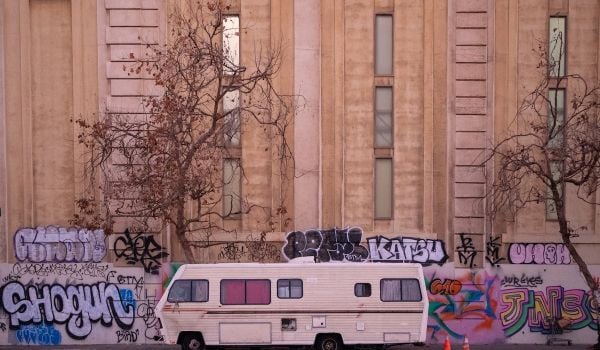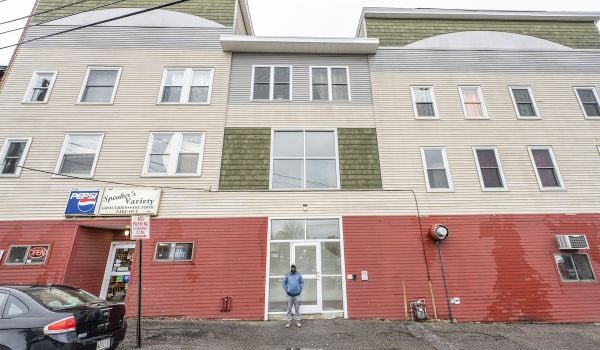“When I talk about small business, it’s a bifurcated discussion,” says Michael Banner. “There’s small business in the general market, and small business owners who are people of color.”
Banner is president and CEO of Los Angeles Local Development Corporation (LALDC), a community development financial institution (CDFI) created to serve L.A. neighborhoods that suffered from redlining and disinvestment. It started out in 1980 as a city-affiliated nonprofit and was spun off in 1995.
Although LALDC does all kinds of lending, small business lending has become a specialty under Banner. When it comes to keeping money flowing in that direction, he welcomed the Nov. 1 news that a Los Angeles-headquartered bank had agreed to a deal that will deploy California deposits for small business and community development lending.
“When I started it was a big boom with everybody getting into low-income housing tax credits and stuff like that,” he remembers. “I kind of said OK, that’s part of the community and there were plenty of smart people doing that, but what about everything else?”
Back then, as now, small business owners of color were less likely to get loans, and when they do, they receive smaller loans and are charged higher interest rates than white business owners. Banner leveraged his banking experience and network of former colleagues, raising capital from larger financial institutions, re-lending that capital successfully to small business owners of color, and paying back the larger institutions who wouldn’t or couldn’t make those loans directly, often due to regulatory concerns.
“Pre-2008, we were able to borrow money, get lines of credit from banks, and act like a true finance company making loans to small businesses,” says Banner. “We had a balance sheet up to $14 million or $15 million.”
But the 2008 financial crisis hit LALDC particularly hard, and it’s been a long, slow process to reestablish productive relationships with banks.
One helpful tool has always been the Community Reinvestment Act (CRA), the 1977 law that outlawed redlining and established a requirement for banks to meet all the credit needs of the communities where they do business. To enforce it, regulators conduct exams. Community-based organizations also get to weigh in on responsiveness — including when there’s an approval process in the works when two banks want to merge. The announced merger last summer of Cathay Bank and Far East National Bank in California provided just such an occasion.
Somewhat surprisingly, Cathay Bank came directly to the California Reinvestment Coalition (CRC) to negotiate a “community reinvestment plan” as part of its acquisition of the smaller Far East National Bank. Historically, groups like CRC have had to request that regulators bring banks to the negotiating table. “It speaks to how serious they were about trying to be proactive,” says Andrea Luquetta-Kern, deputy director at CRC. “It’s not the first time that a bank has approached us first.”
Banner adds that Cathay Bank, as a federally certified minority-depository institution (meaning that its owners or leadership are primarily people of color), understands the importance of investing in communities of color.
“It owes its existence to serving a minority market, but they’ve now grown to a size and scale where they are thinking about growing beyond their original market serving mostly the Asian community,” he says. Out of 43 minority-depository institutions in California, 37 are categorized as Asian, five are Hispanic, and only one, Broadway Federal Savings Bank, is categorized as black.
The resulting community reinvestment plan, announced this month, sets out specific goals for over $4 billion in loans, investments and financial services to low- and moderate-income communities and communities of color over 10 years across the geographic footprint of the combined bank, including Los Angeles and Orange counties, portions of Riverside and San Bernardino counties, San Diego County, Alameda and Contra Costa counties, San Francisco and San Mateo counties, Santa Clara County, and Sacramento County.
It’s one of five standing reinvestment plans that CRC has negotiated. As a starting point for these negotiations, CRC typically requests that banks commit to making annual loans, investments and grants for reinvestment purposes equal to 20 percent of the deposits they hold in California. In this case, Cathay Bank committed to a 9 percent reinvestment-to-deposits ratio in 2017, ramping up to 15 percent by 2027.
Between Cathay Bank’s 33 branches and Far East’s nine branches, the combined California branch network will hold around $8.7 billion in deposits. So that annual reinvestment amount will hover around a billion dollars.
All of it, the capital and beyond, is music to Banner’s ears.
“Having capital is important to us, but having the relationships is also part of our work too,” he says. Banner estimates since 1995 he’s helped move at least $350 million in capital to businesses and communities that would not have accessed capital otherwise — but only some of that capital has been from LALDC. A great deal of it has been from other banks in the L.A. area that have sometimes provided loans to businesses only after they’ve established a track record of paying back a loan to LALDC.
“I’m a little bit of an anomaly, because I send them customers,” Banner says.
Cathay will need those customers — starting in 2018, the bank committed to a goal that at least half of the Bank’s CRA-qualified small business loans will go to small businesses with annual revenues of less than $1 million, or loans of less than $150,000, excluding credit card loans.
It goes both ways, too. Cathay committed to develop a referral program with local CDFIs and other technical assistance providers that can assist and potentially lend to small business owners who did not qualify for financing from them. The bank also committed to increase and diversify its SBA lending and to potentially join California’s Small Business Loan Guarantee Program.
Banner also anticipates a huge wave of infrastructure spending coming down the pike in L.A., which has already been spending a lot on expanding its public transit system. Anywhere from $150 million to $250 million could be in the works for required minority- and women-owned business subcontracting for infrastructure, according to Banner. His borrowers will want to take advantage of that, and banks like Cathay may want to jump on board that train.
“I say, ‘guys that’s the market to grow your business,’” Banner says.
The Equity Factor is made possible with the support of the Surdna Foundation.

Oscar is Next City's senior economic justice correspondent. He previously served as Next City’s editor from 2018-2019, and was a Next City Equitable Cities Fellow from 2015-2016. Since 2011, Oscar has covered community development finance, community banking, impact investing, economic development, housing and more for media outlets such as Shelterforce, B Magazine, Impact Alpha and Fast Company.
Follow Oscar .(JavaScript must be enabled to view this email address)





_920_518_600_350_80_s_c1.jpg)











